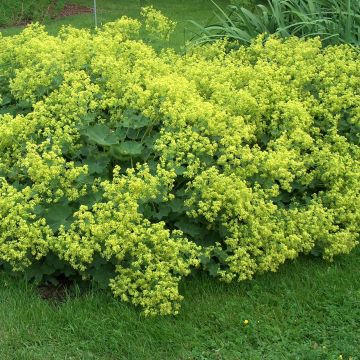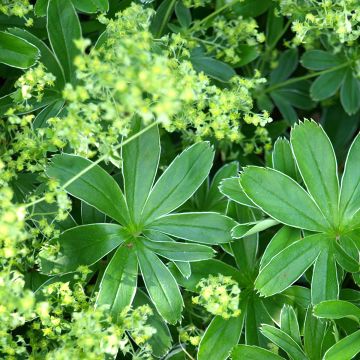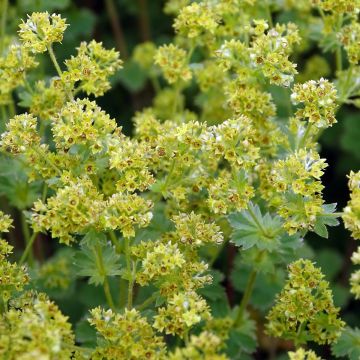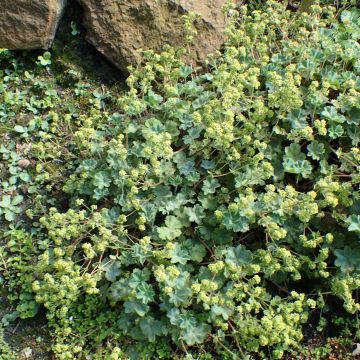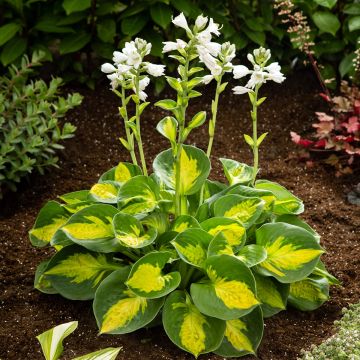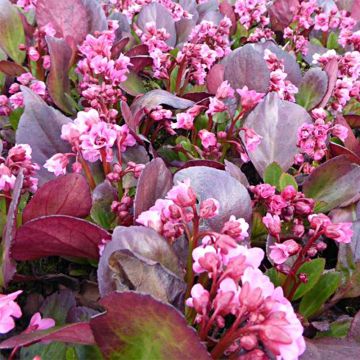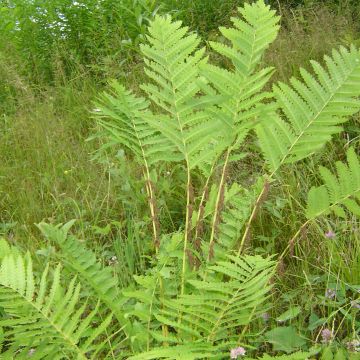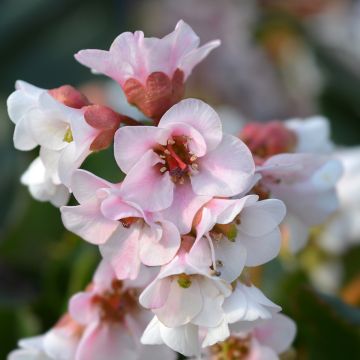

Alchemilla vulgaris


Alchemilla vulgaris


Alchemilla vulgaris


Alchemilla vulgaris


Alchemilla vulgaris


Alchemilla vulgaris


Alchemilla vulgaris


Alchemilla vulgaris


Alchemilla vulgaris


Alchemilla vulgaris
Alchemilla vulgaris
Alchemilla vulgaris
Lady's Mantle, Common Lady's Mantle, Garden Lady's Mantle
Very good recovery, very delicate flowering that brings light, very original water-repellent foliage.
Maudapl, 27/02/2024
This item cannot be shipped to the selected country
Delivery charge from €5.90
More information
Schedule delivery date,
and select date in basket
This plant carries a 12 months recovery warranty
More information
We guarantee the quality of our plants for a full growing cycle, and will replace at our expense any plant that fails to recover under normal climatic and planting conditions.
From €5.90 for pickup delivery and €6.90 for home delivery
Express home delivery from €8.90.

Does this plant fit my garden?
Set up your Plantfit profile →
Description
The Alchemilla vulgaris, also known as common lady's mantle, is a perennial ground cover, easy to cultivate. It is highly polymorphous, varying in height as it adapts to different situations. Its pretty round, soft and serrated leaves, with a strong water-repellent power, disappear from May to August under abundant bouquets of small yellow-green flowers, giving a very light appearance. This wild, ornamental and medicinal plant has a place in all gardens, even the smallest ones. It thrives best in partial shade, in humus-rich and moderately moist soil.
The Alchemilla vulgaris is a herbaceous perennial of the rose family, native to Europe, Siberia, Greenland and Labrador. It forms a carpet-like clump, reaching a height of 8 to 40 cm (3 to 16in) depending on the growing conditions. Its foliage is remarkable, adorned with dewdrops in the morning, and very soft to the touch. The leaves are large and almost circular, with a serrated edge. They are light green on both sides. They are divided into 7 to 12 shallow lobes, and are attached to light green stems tinged with red, more or less hairy. The flowers appear from May to October, in the form of tiny flowers grouped in diffuse corymbose clusters (cloud-like clusters), yellow-green in colour, light and very bright. This perennial is an excellent ground cover that spreads spontaneously and can become invasive (a tip: in August, cut all the foliage of your Alchemilla mollis with shears, new foliage will appear within 15 days).
In nature, lady's mantle grows near woods, in damp pastures, from the plains in the North to the alpine regions of all the mountains in France. In the garden, it will cover the ground, in dappled sunlight or partial shade, harmonising its chartreuse flowering with beautiful English or old-fashioned roses, as well as majestic lilies. This plant has no rival in softening the edges of a newly laid path and hiding the bare soil around recent constructions. It can grow in very little soil, as long as it remains moist, allowing it to be installed in the gaps between paving stones, in the crevices of old walls, or even in the steps of a staircase. Its lime green flowers can be used in fresh or dried bouquets.
Properties:
The Alchemilla vulgaris is a medicinal plant with multiple virtues, its use dating back to the Middle Ages. It was also believed to have the ability to restore some youth and tonicity to not-so-young ladies.
This plant is edible for both humans and livestock, and it seems to give a special taste to milk and cheese from animals that have grazed on it. Its dried leaves can also be used to flavour tea.
Report an error about the product description
Alchemilla vulgaris in pictures




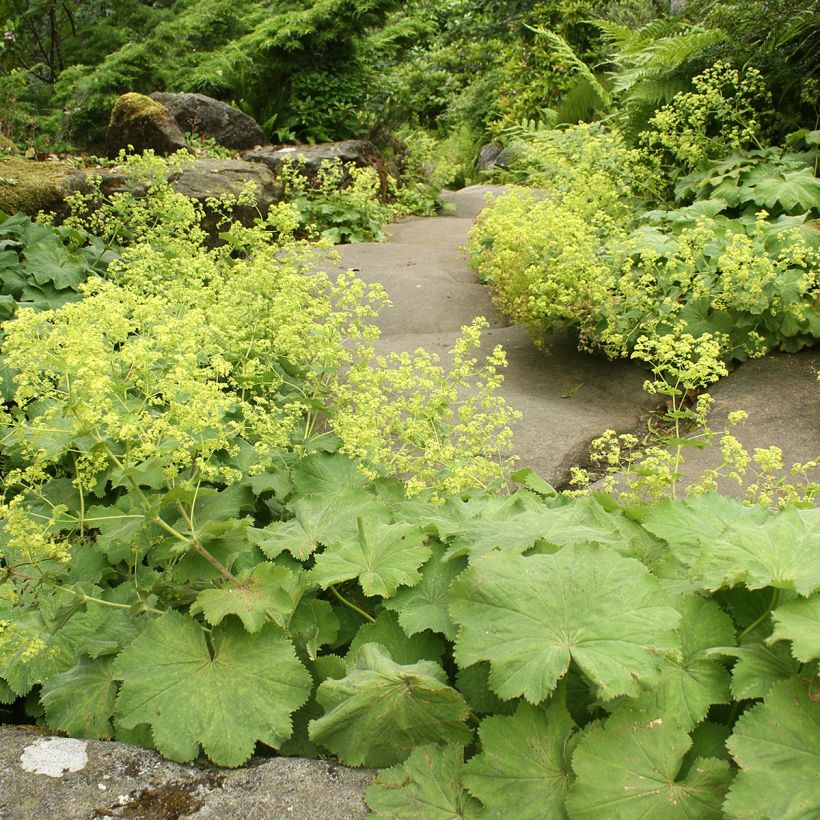

Flowering
Foliage
Plant habit
Botanical data
Alchemilla
vulgaris
Rosaceae
Lady's Mantle, Common Lady's Mantle, Garden Lady's Mantle
Central Europe
Other Alchemilla
Planting and care
Plant the alchemilla in dappled sunlight or partial shade in moist to damp soil, as this is where its foliage will thrive. These very easy plants have no specific requirements except that they are sensitive to excessive drought. If you are unable to water them, you can place a layer of grass clippings around the base. Make sure to water them regularly during the first six weeks to promote establishment. Cut the flowers at the end of summer to prevent being overrun by numerous spontaneous seedlings.
Planting period
Intended location
Care
-
, onOrder confirmed
Reply from on Promesse de fleurs
Shade-loving perennials
Haven't found what you were looking for?
Hardiness is the lowest winter temperature a plant can endure without suffering serious damage or even dying. However, hardiness is affected by location (a sheltered area, such as a patio), protection (winter cover) and soil type (hardiness is improved by well-drained soil).

Photo Sharing Terms & Conditions
In order to encourage gardeners to interact and share their experiences, Promesse de fleurs offers various media enabling content to be uploaded onto its Site - in particular via the ‘Photo sharing’ module.
The User agrees to refrain from:
- Posting any content that is illegal, prejudicial, insulting, racist, inciteful to hatred, revisionist, contrary to public decency, that infringes on privacy or on the privacy rights of third parties, in particular the publicity rights of persons and goods, intellectual property rights, or the right to privacy.
- Submitting content on behalf of a third party;
- Impersonate the identity of a third party and/or publish any personal information about a third party;
In general, the User undertakes to refrain from any unethical behaviour.
All Content (in particular text, comments, files, images, photos, videos, creative works, etc.), which may be subject to property or intellectual property rights, image or other private rights, shall remain the property of the User, subject to the limited rights granted by the terms of the licence granted by Promesse de fleurs as stated below. Users are at liberty to publish or not to publish such Content on the Site, notably via the ‘Photo Sharing’ facility, and accept that this Content shall be made public and freely accessible, notably on the Internet.
Users further acknowledge, undertake to have ,and guarantee that they hold all necessary rights and permissions to publish such material on the Site, in particular with regard to the legislation in force pertaining to any privacy, property, intellectual property, image, or contractual rights, or rights of any other nature. By publishing such Content on the Site, Users acknowledge accepting full liability as publishers of the Content within the meaning of the law, and grant Promesse de fleurs, free of charge, an inclusive, worldwide licence for the said Content for the entire duration of its publication, including all reproduction, representation, up/downloading, displaying, performing, transmission, and storage rights.
Users also grant permission for their name to be linked to the Content and accept that this link may not always be made available.
By engaging in posting material, Users consent to their Content becoming automatically accessible on the Internet, in particular on other sites and/or blogs and/or web pages of the Promesse de fleurs site, including in particular social pages and the Promesse de fleurs catalogue.
Users may secure the removal of entrusted content free of charge by issuing a simple request via our contact form.
The flowering period indicated on our website applies to countries and regions located in USDA zone 8 (France, the United Kingdom, Ireland, the Netherlands, etc.)
It will vary according to where you live:
- In zones 9 to 10 (Italy, Spain, Greece, etc.), flowering will occur about 2 to 4 weeks earlier.
- In zones 6 to 7 (Germany, Poland, Slovenia, and lower mountainous regions), flowering will be delayed by 2 to 3 weeks.
- In zone 5 (Central Europe, Scandinavia), blooming will be delayed by 3 to 5 weeks.
In temperate climates, pruning of spring-flowering shrubs (forsythia, spireas, etc.) should be done just after flowering.
Pruning of summer-flowering shrubs (Indian Lilac, Perovskia, etc.) can be done in winter or spring.
In cold regions as well as with frost-sensitive plants, avoid pruning too early when severe frosts may still occur.
The planting period indicated on our website applies to countries and regions located in USDA zone 8 (France, United Kingdom, Ireland, Netherlands).
It will vary according to where you live:
- In Mediterranean zones (Marseille, Madrid, Milan, etc.), autumn and winter are the best planting periods.
- In continental zones (Strasbourg, Munich, Vienna, etc.), delay planting by 2 to 3 weeks in spring and bring it forward by 2 to 4 weeks in autumn.
- In mountainous regions (the Alps, Pyrenees, Carpathians, etc.), it is best to plant in late spring (May-June) or late summer (August-September).
The harvesting period indicated on our website applies to countries and regions in USDA zone 8 (France, England, Ireland, the Netherlands).
In colder areas (Scandinavia, Poland, Austria...) fruit and vegetable harvests are likely to be delayed by 3-4 weeks.
In warmer areas (Italy, Spain, Greece, etc.), harvesting will probably take place earlier, depending on weather conditions.
The sowing periods indicated on our website apply to countries and regions within USDA Zone 8 (France, UK, Ireland, Netherlands).
In colder areas (Scandinavia, Poland, Austria...), delay any outdoor sowing by 3-4 weeks, or sow under glass.
In warmer climes (Italy, Spain, Greece, etc.), bring outdoor sowing forward by a few weeks.



































